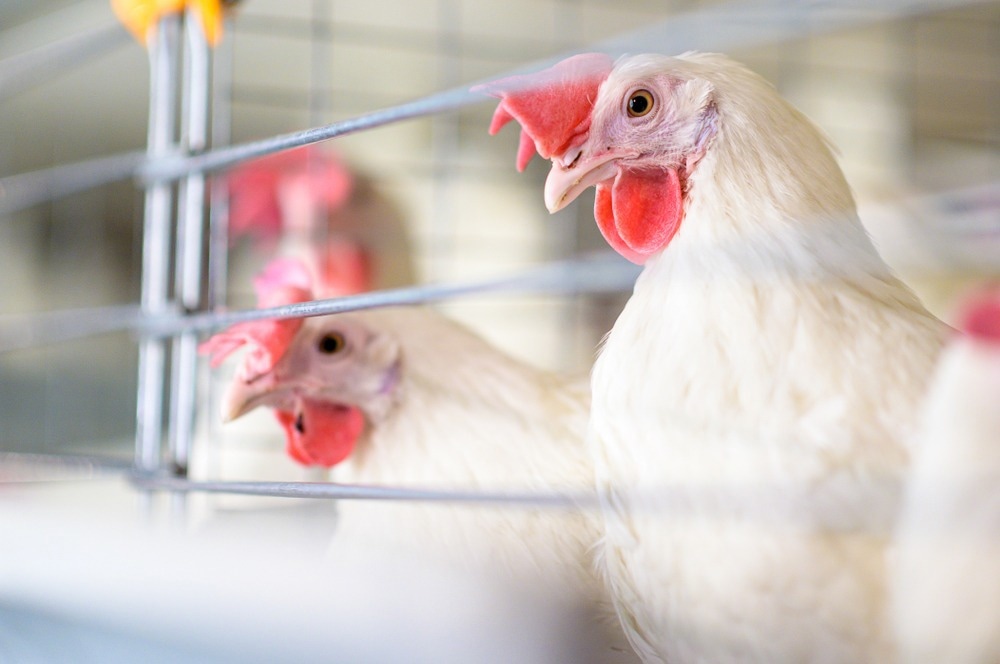Herein, a combined prevalence of 1.6% with an upper limit of 1.9% was reported, with incidences that varied at different time points. Despite the availability of vaccines against the avian influenza virus that is protective against specific clades of H5N8, other clades that escape vaccine-induced immunity will likely continue to emerge.

Study: Prevalence of the H5N8 influenza virus in birds: Systematic review with meta-analysis. Image Credit: Mark Agnor / Shutterstock.com
Background
Avian influenza is an extremely contagious virus that primarily affects poultry. The highly pathogenic form of the avian influenza virus (HPAIV) can transmit from poultry to humans.
In 2010, the H5N8 strain of HPAIV belonging to clade 2.3.4.4 was detected for the first time in wild Asian birds. The infection later spread among domestic birds in South Korea, Japan, and China.
Recently, H5N8 was reported in many countries in Europe, the Middle East, and Asia. The viral spread had been attributed to the migratory wild birds, thus posing a global concern.
The highly pathogenic avian influenza virus, which belongs to the Orthomyxoviridae family, includes genetic variants of less virulent predecessors. Different viral variants result from different subtypes of neuraminidase (N1-N9) and hemagglutinin (H1-H16) in birds. The avian influenza virus changes its epidemiology based on its interaction with its hosts and the environment.
This virus is most commonly found in places that are natural habitats of waterfowl and locations where live bird markets are held. Furthermore, this virus is also frequently detected in poultry farms, slaughter plants, and intensive livestock farms.
The avian virus can mutate and undergo genetic recombination to quickly adapt to new hosts. In particular, H5N8 has a high potential for interspecies transmission and, as a result, is of considerable global health concern.
Study findings
The current analysis included 20 studies published from 2014-2021. Most studies were conducted in the Netherlands; however, other regions included Saudi Arabia, China, Egypt, and Switzerland. The most frequently infected bird species were Anas crecca, Gallus gallus domesticus, Anas acuta, Cygnus olor, and Anas platyrhynchos.
Fecal, oropharyngeal, cloacal, tracheal, and tissue samples were collected in these studies. Nineteen of the 20 selected studies used reverse transcription-polymerase chain reaction (RT-PCR) assay for viral confirmation, while one used enzyme-linked immunosorbent assay (ELISA).
Out of the 161,804 birds evaluated in all studies, 1,133 were positive for H5N8. The prevalence of H5N8 varied according to geographical location, with 96.9% of cases reported in the United States, 94.4% in Uganda, and 0.2% in South Korea. The time point also contributed to the prevalence of H5N8, with 0.2% reported in 2014, 96.9% in 2015, and 52.6% in 2020.
A cohort comprising 27 birds exhibited a seroprevalence of 66.7% which was confirmed by ELISA. For this, antibodies were evaluated in cloacal, blood, and oropharyngeal samples.
Discussion
The highly contagious H5N8 avian influenza virus has proven fatal for millions of birds. Interspecies transmission of the virus, including to human beings, and across countries poses a global threat. Furthermore, H5N8 infection has increased in pathogenicity over time.
Rampant avian deaths may indicate a viral outbreak. H5N8 has infected millions of birds of many species that migrate to different countries, wherein they remain for prolonged periods of seven to eight months.
Birds often migrate from more infected countries that harbor wider viral genetic variability. Notably, waterfowls act as reservoirs of the virus, which can infect poultry worldwide.
H5N8 has also affected the global economy. Millions of people depend on agriculture for their livelihood; therefore, such outbreaks have led to significant agricultural losses.
The winter outbreak of H5N8 in 2020-2021, for example, significantly impacted poultry in regions of Africa, the Middle East, Europe, and Central Asia. Vietnam also incurred heavy economic loss due to avian influenza. Owing to mass-scale deaths and the slaughtering of nearly 45 million animals, countries like Japan and Indonesia also sustained significant losses.
Control plans and surveillance are constantly being devised due to the increased risks of viral infection. Continuous monitoring and evaluation of new approaches how to protect animals and humans are warranted.
Conclusions
The presence of the same birds in poultry systems, varied environments, and migration routes render potent sources for the transmission of H5N8. This viral infection should not be neglected, as the virus can undergo rapid genetic mutations and is capable of interspecies transmission.
The OneHealth approach, which assesses both animal and human infections, should be adopted. Additional surveillance is also warranted to prevent and mitigate H5N8 infections in the future.
Journal reference:
- Calle-Hernández, D. M., Hoyos-Salazar, V., & Bonilla-Aldana, D. K. (2022). Prevalence of the H5N8 influenza virus in birds: Systematic review with meta-analysis. Travel Medicine and Infectious Disease. doi:10.1016/j.tmaid.2022.102490